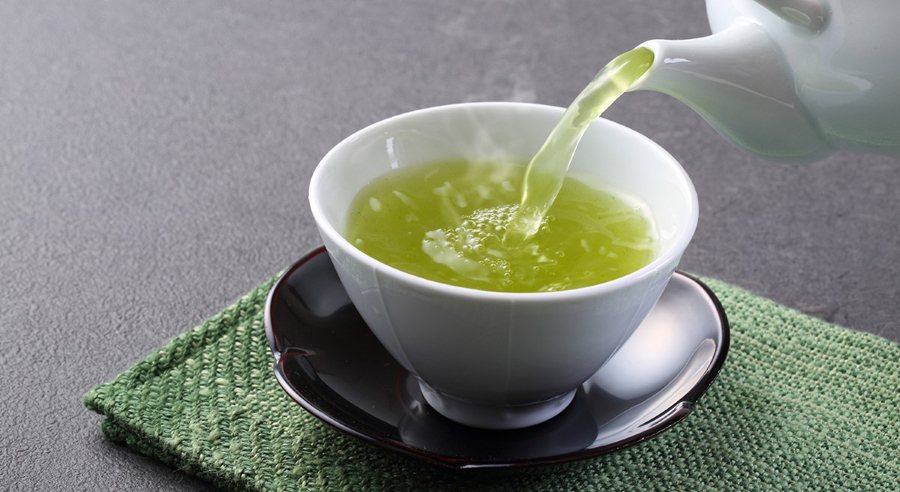
Many people start their day with a sip of green tea, and its popularity continues throughout the day. Some drink it to lose weight, others for health benefits, and some for its beauty-enhancing properties. Green tea is consumed globally, but how did it find its place in our cups, and why is it so popular?
The story behind green tea is equally fascinating.
The origin of green tea
Green tea is believed to have originated thousands of years ago in the lush hills of China. According to legend, an emperor discovered the magical aroma and flavor of tea when a tea leaf accidentally fell into his cup of hot water. Since then, green tea has been used for both medicinal and cultural purposes.
In Nepal, the habit of drinking green tea began only in recent years, yet its popularity has grown rapidly. Green tea is made by lightly steaming and drying the tea leaves, which helps preserve its natural qualities and green color. Unlike other teas, it undergoes minimal processing, retaining most of its natural antioxidants and nutrients—making it a unique choice.
What’s in green tea?
Green tea contains antioxidants (catechins), caffeine, theanine, vitamin C, and essential minerals. These compounds help boost metabolism, regulate weight, improve heart health, and reduce the risk of cancer.
How much to drink?
The right amount of green tea depends on a person’s age, health, lifestyle, and tolerance. Studies suggest that 2 to 3 cups (about 240 to 720 ml) of green tea daily are ideal for healthy adults to reap its benefits without significant side effects.
According to Harvard Medical School, drinking 2 to 3 cups a day can lower the risk of heart disease and improve brain function. Antioxidants in green tea help reduce inflammation in blood vessels, improve blood circulation, and lower cholesterol levels, which in turn reduces heart-related risks.
Catechins and L-theanine also enhance nerve health, memory, and concentration.
Other benefits
– Antioxidants protect cells from damage and reduce the risk of certain cancers.
– EGCG (Epigallocatechin gallate) found in green tea may inhibit cancer cell growth.
– Promotes healthy, glowing skin.
– Boosts the immune system.
Each cup of green tea typically contains 20–45 mg of caffeine. If you’re sensitive to caffeine, limit your intake to no more than 2 cups per day. Pregnant women, people with high blood pressure, or digestive issues should consult a doctor before drinking green tea regularly.
Avoid overconsumption
Drinking more than 5 cups of green tea per day can lead to excess caffeine intake, resulting in insomnia, anxiety, and digestive problems. Tannins in green tea can interfere with iron absorption and increase the risk of anemia. Excessive consumption may also affect heart function.
How to prepare green tea
The method of preparation significantly affects its taste and health benefits. Incorrect preparation can reduce both.
– Use water heated to 75–85°C (not boiling).
– Do not boil green tea like regular tea. Instead, pour hot water over the tea leaves or teabag and cover it for 2–3 minutes before drinking.
– Boiling water (100°C) can make green tea bitter and destroy its antioxidants. Let boiled water cool for 1–2 minutes before using.
Steeping time:
Soak the tea leaves or teabag for 1 to 3 minutes. Longer steeping makes it bitter. Start with 1 minute and adjust according to taste.
Enhance the taste
You can add lemon juice, honey, or ginger to enhance both flavor and benefits. The vitamin C in lemon helps with antioxidant absorption. Instead of sugar or artificial sweeteners, use mishri (rock sugar) if needed.
When to drink green tea
The timing of green tea consumption also affects its impact.
After breakfast:
Drinking green tea post-breakfast can boost metabolism and energy levels. The combination of caffeine and theanine improves focus and alertness.
On an empty stomach?
Not recommended. Tannins and caffeine can increase acidity and cause gastric issues when taken on an empty stomach. It’s better to drink it 30–60 minutes after breakfast or a light meal. Drinking warm water before green tea is also advisable.
Afternoon (post-lunch):
Having green tea between 2–3 PM helps reduce fatigue and improves brain function. Light caffeine intake at this time can enhance energy.
Before exercise:
Drinking green tea 30–45 minutes before a workout can accelerate fat-burning.
Evening (limited amount):
Avoid drinking green tea after 6 PM to prevent sleep disturbances due to caffeine. You may have a mild cup 1–2 hours after dinner to aid digestion.
Special cases:
– To lose weight, drink green tea in the morning and afternoon, ideally 30 minutes before or after meals.
– For stress relief, drink it in a calm environment during the afternoon to benefit from the calming effects of theanine.
Choosing quality green tea
With various options available in the market, always opt for organic and high-quality green tea. Cheaper varieties may contain harmful chemicals. Loose leaf green tea is often better, and fresh leaves should appear green when soaked in water—an indication of authenticity.
Storage Tip:
Keep green tea in an airtight container, away from sunlight and moisture to retain its freshness.
If you are on blood pressure medication, blood thinners, or other prescription drugs, consult your doctor before incorporating green tea into your diet. Avoid drinking it immediately after meals, as it may hinder iron absorption.


















